SAUDI MODERN PACKAGING Co LIMITED "
PRINTOPACK"
Our services in the packaging is for flexible
packaging thus we convert the unprinted raw material
into printed material ready for packaging this
report is presented as an overview of the product &
its raw material with special reference of the
company and its wide range of products which are
catering the needs of millions of consumers in
domestic as well as in international market.
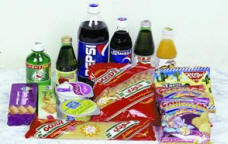
IMPORTANCE OF
PACKAGING.
Packaging: Packaging is the science, art
and technology of enclosing or
protecting products for distribution,
storage, sale, and use. Packaging also
refers to the process of design,
evaluation, and production of packages.
Package labeling (BrE) or labeling (AmE)
is any written, electronic, or graphic
communications on the packaging or on a
separate but associated label.
Packaging can be described as a
coordinated system of preparing goods
for transport, warehousing, logistics,
sale, and end use. Packaging contains,
protects. preserves, transports,
informs, and sells. . It is fully
integrated into government, business,
institutional, industry, and personal
use.
Raw Materials
OPP (Oriented Poly
Propylene)
1. OPP Transparent
2. OPP Metallized
3. OPP White
4. OPP Pearlized
CPP (Cast Poly Propylene)
1. CPP Metallized
2. CPP Clear
Aluminum
1. Aluminum Soft
2. Aluminum Hard
PE (Polyethylene)
1. LDPE
2. MDPE
3. HDPE
PET (Polyester)
1. Oriented Polyester (PET)
2. PVDC coated polyester (K-PET)
Our Machinery
->
Flexo (2 Machines)
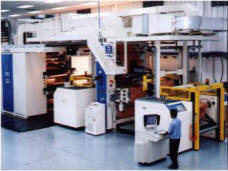
->
Roto ( 2 Machines)
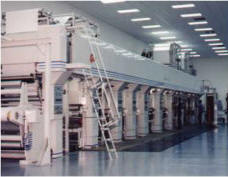
->
Gallus Machine ( for sticker)
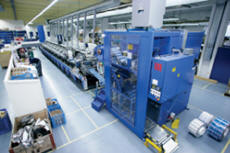
->
Lamination (5 Machines)
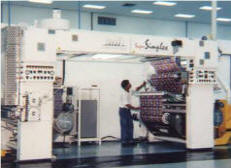
->
Slitting (8 Machines)

->
Extruder

->
Cone making
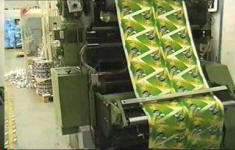
->
sleeves

->
Cutter

->
Punching Machine
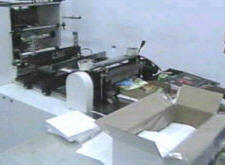
|
Name of the
Machinery |
Company Name |
Year |
Origin Country |
|
ROTO -1 |
Roto Giave Titania |
1996 |
Spain |
|
ROTO-2 |
Roto Giave Titania |
2007 |
Spain |
|
FLEXO-1 |
Flexo Technica |
1996 |
Italy |
|
FLEXO -2 |
Flexo Comexi |
1996 |
Spain |
|
GALLUS |
Gallus |
1996 |
Sweden |
|
Slitter 1 & 2 |
Euromec |
1996 |
Italy |
|
Slitter 3 |
Bimec |
2000 |
Italy |
|
Slitter 4 |
LAEM |
1999 |
Italy |
|
Slitter 5 |
Bielloni |
2007 |
Italy |
|
Slitter 7 |
Comexi |
1996 |
Spain |
|
|
|
|
|
|
Laminators 3 |
Comexi |
|
Spain |
|
Laminator 4 |
Super Combi |
2007 |
Italy |
|
Laminator 5 |
Simplex |
1994 |
Italy |
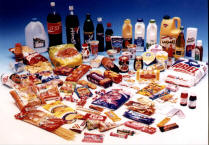
The purposes of
packaging and package labels
Packaging and package labeling have several
objectives:
>>
Physical protection - The objects enclosed
in the package may require protection from,
among other things, shock, vibration,
compression, temperature, etc.
>>
Barrier protection - A barrier
from oxygen, water vapor, dust, etc., is
often required. Permeation is a critical
factor in design. Some packages contain
desiccants or Oxygen absorbers to help
extend shelf life. Modified atmospheres or
controlled atmospheres are also maintained
in some food packages. Keeping the contents
clean, fresh, and safe for the intended
shelf life is a primary function.
>>
Containment or agglomeration
- Small objects are typically grouped
together in one package for reasons of
efficiency. For example, a single box of
1000 pencils requires less physical handling
than 1000 single pencils. Liquids, powders,
and granules need containment.
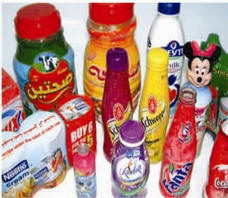
>> Information transmission
- Packages and labels communicate how to
use, transport, recycle, or dispose of the
package or product. With pharmaceuticals,
food, medical, and chemical products, some
types of information are required by
governments.
>>
Marketing - The packaging
and labels can be used by marketers to
encourage potential buyers to purchase the
product. Package design has been an
important and constantly evolving phenomenon
for several decades. Marketing
communications and graphic design are
applied to the surface of the package and
(in many cases) the point of sale display.
>>
Security - Packaging can
play an important role in reducing the
security risks of shipment. Packages can be
made with improved tamper resistance to
deter tampering and also can have
tamper-evident features to help indicate
tampering. Packages can be engineered to
help reduce the risks of package pilferage:
Some package constructions are more
resistant to pilferage and some have pilfer
indicating seals. Packages may include
authentication seals to help indicate that
the package and contents are not
counterfeit. Packages also can include
anti-theft devices, such as dye-packs, RFID
tags, or electronic article surveillance
tags, that can be activated or detected by
devices at exit points and require
specialized tools to deactivate. Using
packaging in this way is a means of loss
prevention.

>>
Convenience - Packages can
have features which add convenience in
distribution, handling, display, sale,
opening, enclosing, use, and reuse.
>>
Portion control - Single
serving or single dosage packaging has a
precise amount of contents to control usage.
Bulk commodities (such as salt) can be
divided into packages that are a more
suitable size for individual households. It
is also aids the control of inventory:
selling sealed one-liter-bottles of milk,
rather than having people bring their own
bottles to fill themselves.
Process Cycle:
The process of a printing of Job in
PRINTOPACK has various stages. We believe in
serving the customer better thus we have a
systematic approach in our working of any
job. The step by step procedures which we
follow make us the better
Summary
For a new job the step by step process is as
follows
1.
Sales : From the department of sales a CD or
a sample of design will be received as per
the customers specification.
and it is mandatory to get the samples
approved from the customer .
2.
Prepress Department: Prepress
department are specialist people in graphics
and designing .They design and modify 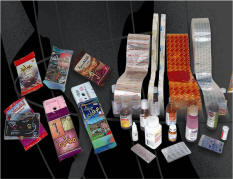
3.
Cylinder Making / Engraving
Department OR Plate making and Mounting
Department: After the prepress departments
4.
Ink Mixing: Ink Mixing is
done as per the sample and the colors
specified by the customer.
5.
Production :Production
starts if all the above processes have been
met with the customer's specified model/
specification.
and as per the customers specification.
6.
Lamination: If the product needs to
be laminated. The product goes for
lamination. The lamination can be done for
two layers
or more than depending upon the product
type.
7.
Slitting: Slitting involves
cutting of the printed or laminated
materials into a certain coils according to
step width.
8.
Quality Check : Please note that
quality checks are done for every process
with some degree of parameters which are
set.
9.
Logistics:
10.
After Sales

Flexography
Known as
flexographic printing or flexo, some typical
applications for flexography are paper and plastic
bags, milk cartons, disposable cups, and candy bar
wrappers.
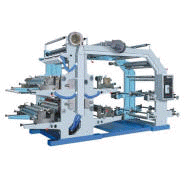
Flexography printing may also be used for envelopes, labels, and newspapers.
Flexography (also
called surface printing), often abbreviated to flexo,
is a method of printing most commonly used for
packaging (labels, tape, bags, boxes, banners,
etc.).
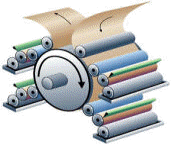
The flexible printing
plate used in the final ink printing stage is light
sensitive. A positive is placed over the plate, and
is displayed to ultra-violet light. The plate is
then 'washed' on a rotating drum in a tank of
Toluene solvent, which removes the layer of material
that received the ultra-violet light.
Originally flexography
printing was basic in quality. Labels requiring high
quality have generally been printed using the offset
process until recently. In the last few years great
advances have been made to the quality of
flexography printing presses.
The greatest advances in
flexography printing have been in the area of
photopolymer printing plates, including improvements
to the plate material and the method of plate
creation, usually photographic exposure followed by
chemical etching, though also by direct laser
engraving.
Flexo has an advantage over lithography in that it
can use a wider range of inks, water based rather
than oil based inks, and is good at printing on a
variety of different materials. Flexographic inks,
like those used in gravure and unlike those used in
lithography, generally have a low viscosity. This
enables faster drying and, as a result, faster
production, which results in lower costs. Printing
press speeds of up to 2000 FPM (600 meters per
minute) are achievable now with modern technology
high-end printers, like Flexotecnica .
ROTOGRAVURE
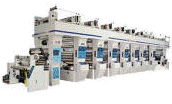
Rotogravure (roto or
gravure for short) is a type of intaglio printing
process, in that it involves engraving the image
onto an image carrier. In gravure printing, the
image is engraved onto a copper cylinder because,
like offset and flexography, it uses a rotary
printing press. The vast majority of gravure presses
print on reels of paper, rather than sheets of
paper. (Sheet fed gravure is a small, specialty
market.) Rotary gravure presses are the fastest and
widest presses in operation, printing everything
from narrow labels to 12-feet-wide rolls of vinyl
flooring. Additional operations may be in-line with
a gravure press, such as saddle stitching facilities
for magazine/brochure work.
|
Method |
cell size |
cell depth |
|
Conventional |
uniform |
variable |
|
"Two positive" or "Lateral hard dot" |
variable |
variable |
|
Direct transfer |
variable |
uniform |
Gravure cylinders nowadays are
typically engraved digitally by a diamond tipped or
laser etching machine. On the gravure
cylinder, the engraved image is composed of small
recessed cells (or 'dots') that act as tiny wells.
Their depth and size control the amount of ink that
gets transferred to the substrate (paper or other
material, such as plastic or foil) via a process of
pressure, osmosis, and electrostatic pull. (A
patented process called "Electrostatic Assist" is
sometimes used to enhance ink transfer.)
